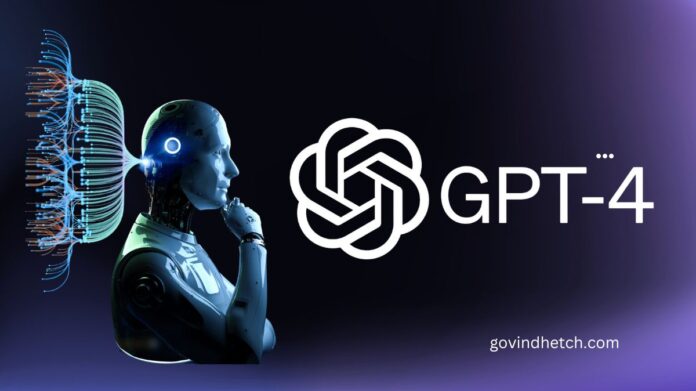The research firm OpenAI has made several small-scale enhancements to its AI models and pricing, the most recent of which are now available. The popular GPT-3.5 Turbo model now has reduced pricing, the GPT-4 Turbo now performs better, and the text embedding models have been improved.
Most notably, OpenAI has reduced the cost of each GPT-3.5 Turbo token by 25% for output and 50% for input. This model drives chatbots such as ChatGPT and is the industry standard for conversational AI. Developers creating text-intensive products that need to analyze books or documents can now access the API more easily thanks to cheaper costs. Lower prices help retain customers as open-source models catch up to OpenAI.
Another update, version, for GPT-3.5 Turbo, brings with it unidentified “improvements.” As the most recent iteration was 0613, some might have anticipated additional information about OpenAI’s advancements.
Technically speaking, researchers and engineers can now access improved semantic representations of language thanks to updated text embedding models.
OpenAI’s most recent changes, while not revolutionary, are indicative of the company’s iterative strategy for improving its AI portfolio.
GPT 4 system message
Artificial intelligence has advanced significantly in language models, with OpenAI leading the way in this research. With GPT-4, their most recent version, language understanding, and generation have advanced significantly. We will examine in detail the capabilities, possible uses, and noteworthy enhancements or drawbacks of GPT-4 over its predecessors in this report.
GPT3.5 vs GPT- 4
1.Open AI’s GPT-4
A multimodal language model called GPT-4 can process text and image inputs and produce text outputs. After a half-year of iterative alignment using ChatGPT and OpenAI’s adversarial testing program, GPT-4 has demonstrated increased creativity, dependability, and capacity to process complex instructions compared to GPT-3.5.
2. Scaling and the Training Process
Significant progress has been made by OpenAI in the GPT-4 training procedure. They have redesigned their deep learning stack in the last two years, working with Azure to create a supercomputer that is optimized for the workload. GPT-3.5 functioned as a training test for GPT-4, allowing for bug fixes and enhancements to fundamental elements. With GPT-4, OpenAI was able to predict training performance with accuracy for the first time in a large model, improving scalability and multilingual performance.
Capabilities for Language and Image Input
GPT-4 provides text input functionality via an API and ChatGPT. Furthermore, OpenAI is working with a partner to investigate and develop image input capabilities. The processing domains that GPT-4 can handle include text documents, documents with images, diagrams, and screenshots. It’s crucial to remember that GPT-4’s picture input feature is still in the research preview phase and isn’t accessible to the general public.
Benchmarking and Performance
GPT-4 has shown remarkable results in a range of academic and professional benchmarks, exhibiting human-level performance. It achieves better results in machine learning benchmarks than both state-of-the-art and large language models, not only in English but also in other languages. GPT-4 outperformed other models in 26 languages tested, including low-resource languages like Swahili, Welsh, and Latvian.
Possible Uses
GPT-4’s improved capabilities open up a wide range of possible applications. GPT-4 has been used internally by OpenAI with notable benefits across a range of functions. Support, sales, content moderation, and programming tasks have all improved. GPT-4 has also shown to be a useful instrument for assessing AI results, which represents a critical turning point in OpenAI’s alignment approach.
Adjustability and Personalization
OpenAI has made significant progress in enhancing steerability by enabling users to modify AI tasks and styles through system messages. With this customization, users can specify how GPT-4 behaves inside predefined parameters. OpenAI acknowledges that continuous enhancements are necessary to guarantee that AI stays within these limitations.
Restrictions and Difficulties
Despite its improved capabilities, GPT-4 is not without risks and limitations. When using the model’s outputs, especially in high-stakes applications, caution must be taken as it may cause hallucinations or reasoning errors. Recognizing these shortcomings, OpenAI seeks to lessen delusions, enhance accuracy, and tackle issues like overlooking minute details.
Dealing with Inequalities and Public Participation
OpenAI actively seeks public input to help define boundaries and defaults that reflect a wide range of user values and actively works to address biases in the GPT-4 outputs. A key component of OpenAI’s goal to develop AI systems that uphold human values and advance society is public engagement.
Access to APIs and Subscription Plans
ChatGPT Plus is currently required to access GPT-4’s capabilities. OpenAI does, however, intend to launch a new subscription tier in the future to accommodate increased usage volumes. Developers can sign up for the waitlist to progressively obtain access to the GPT-4 API. Through their Researcher Access Program, OpenAI also provides researchers with subsidized access, allowing them to investigate the potential societal effects of AI.
Assessment and Input
An open-source framework for automating the assessment of AI model performance is called OpenAI Evals, created by OpenAI. By evaluating the models and reporting issues, users can help to improve their performance. This methodology facilitates ongoing assessment and optimization of models such as GPT-4.
In summary
A notable development in language models and natural language processing technologies is OpenAI’s GPT-4. It provides better performance, increased dependability, and text and image processing capabilities. GPT-4 exhibits superior performance in multiple languages and has shown human-level performance in a variety of benchmarks. Even with its drawbacks, OpenAI is improving GPT-4, addressing biases, and ensuring better performance. Many exciting advanced language model research, development, and application opportunities exist with GPT-4.
FAQ
How much better is GPT-4 than 3.5?
GPT-4 is 10 times more advanced than GPT-3.5, according to OpenAI. This improvement helps the model understand context and distinguish nuances, resulting in more accurate and coherent responses.


